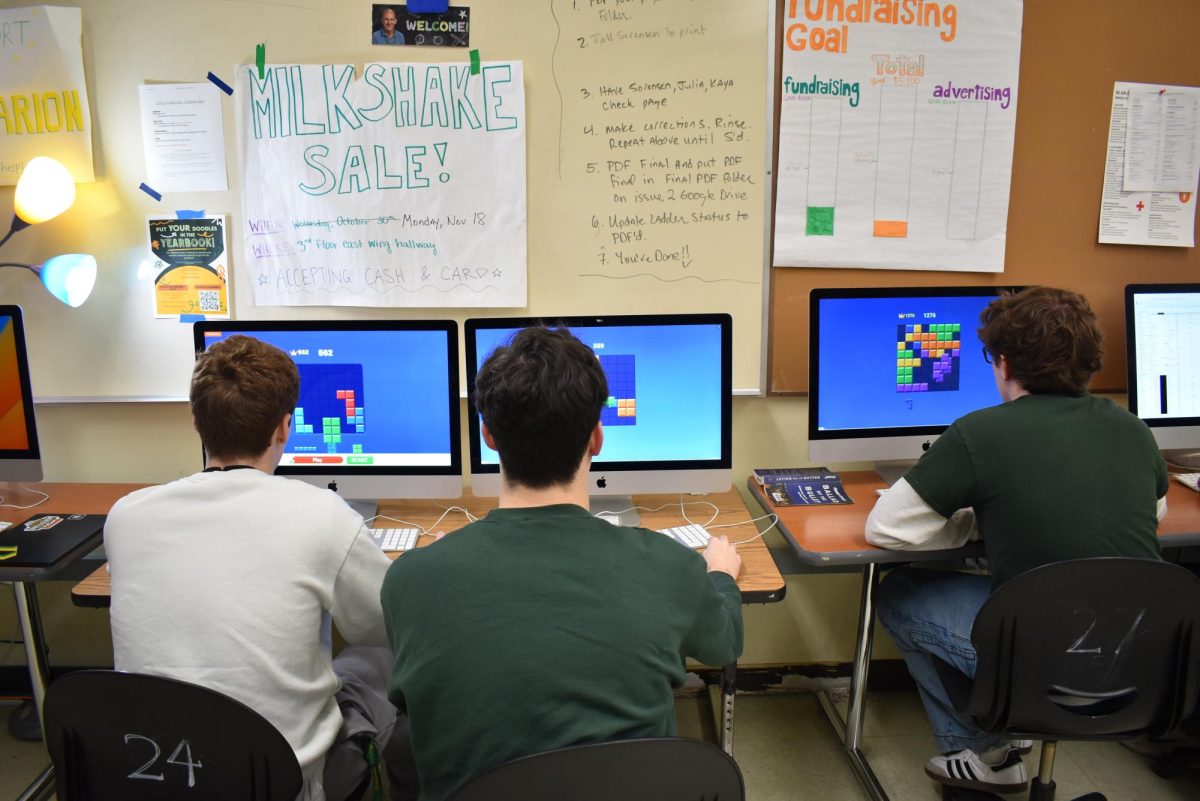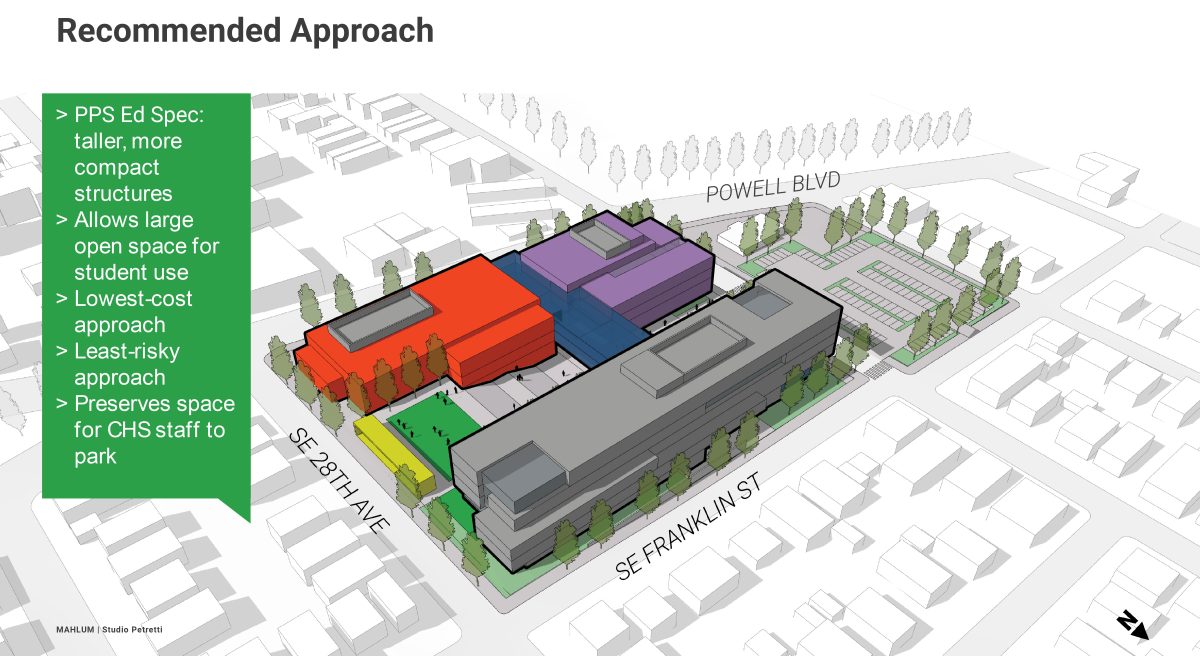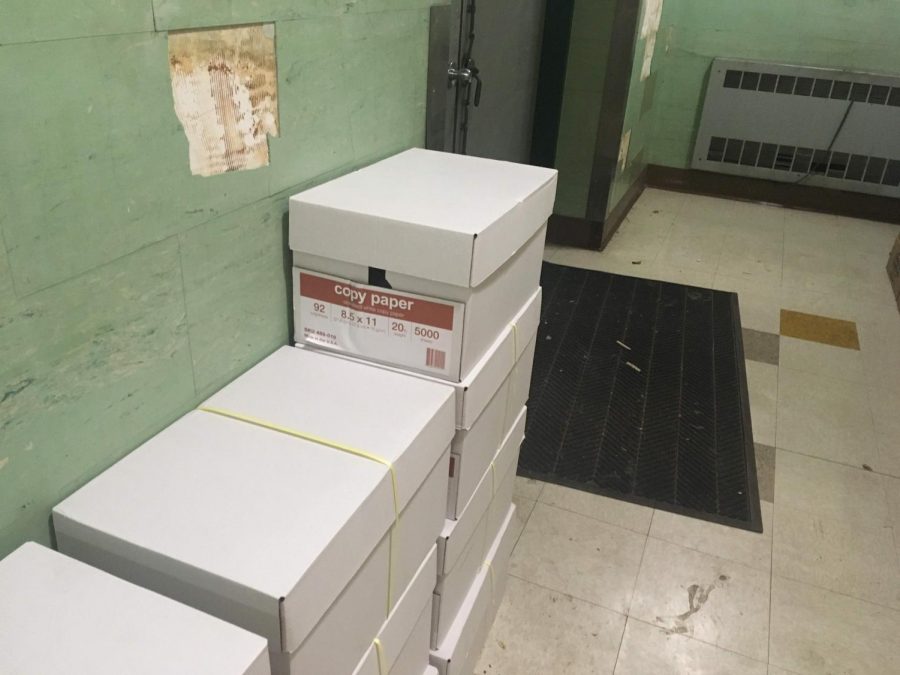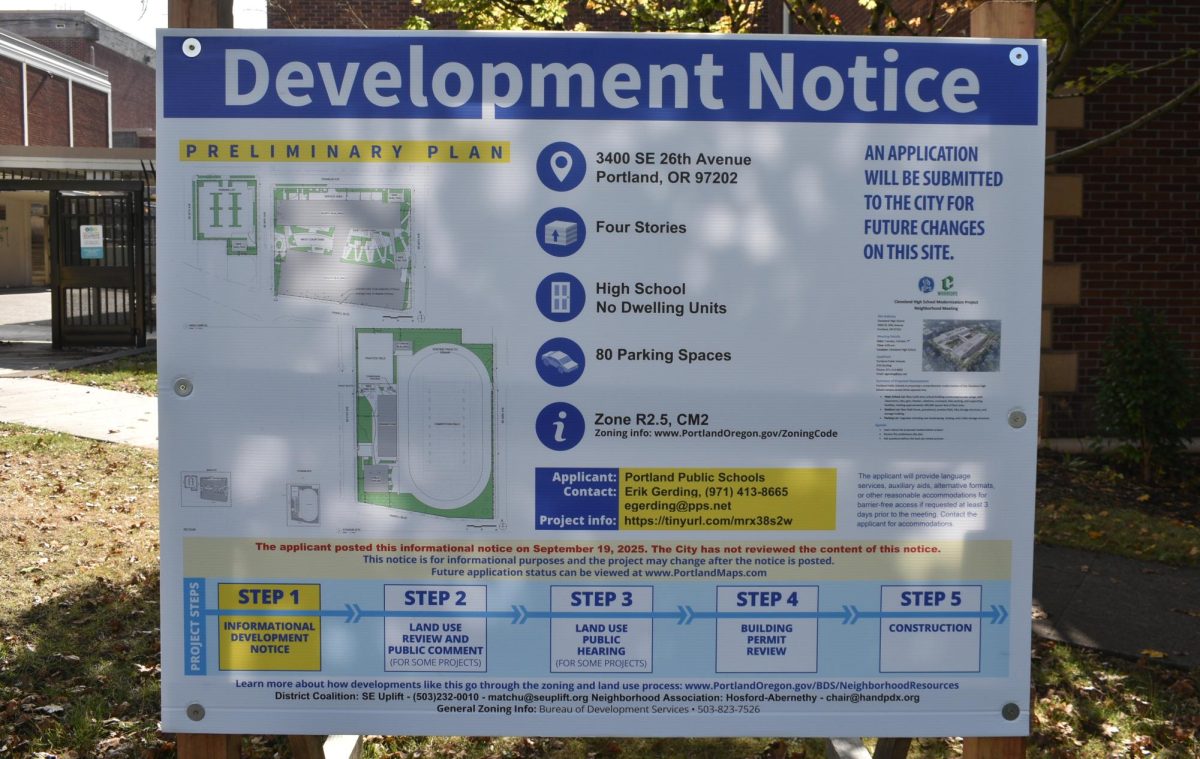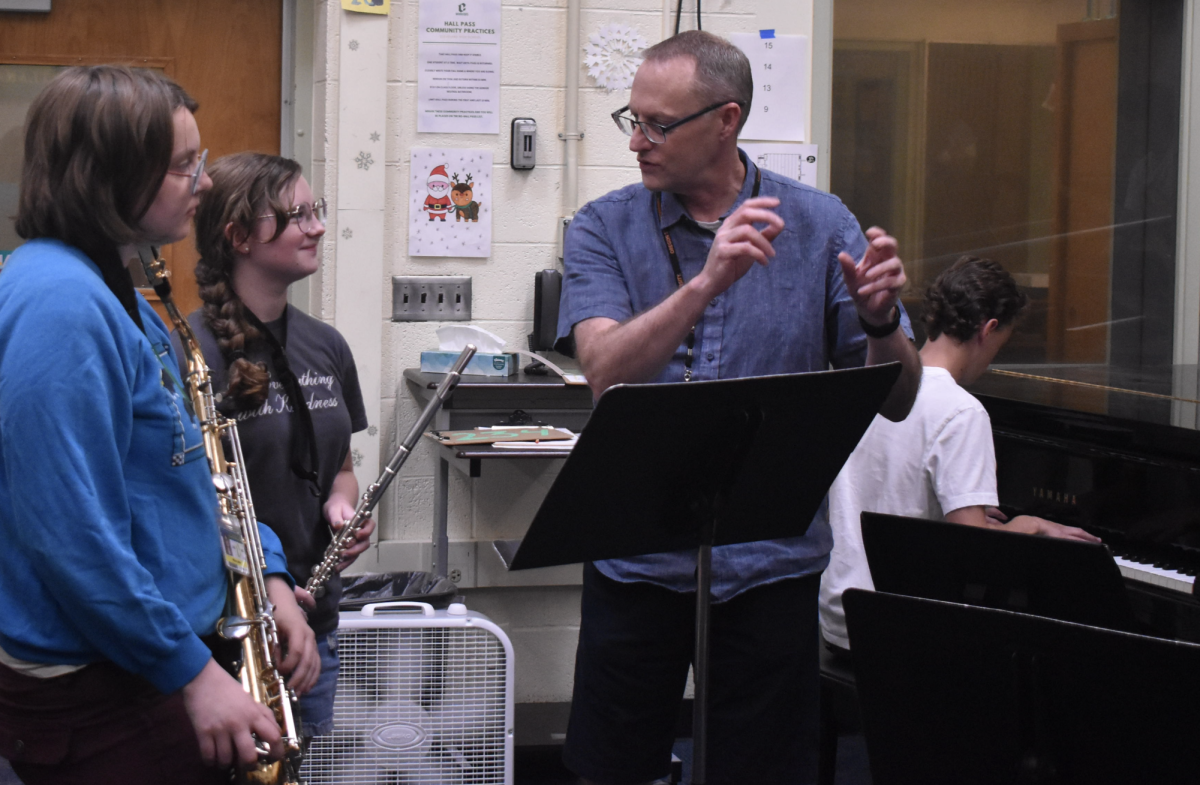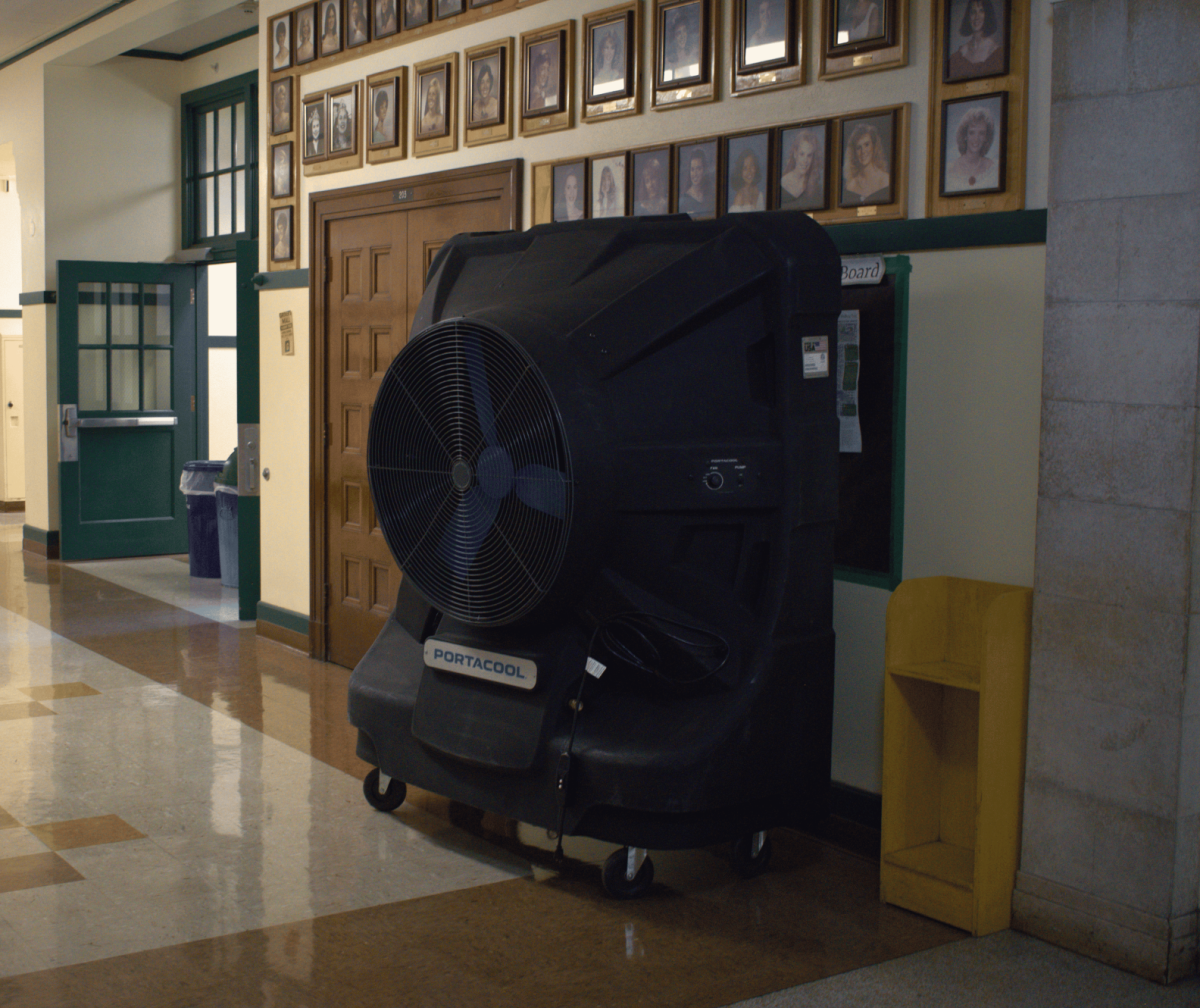In 2025, PPS must cut $40 million from its $800 million budget. In the past year, it has already slashed more than $30 million, which resulted in the loss of 200 jobs, everywhere from school libraries to district offices.
According to Portland Public Schools Superintendent Kimberlee Armstrong, the budget cuts will require “us to lean into the conversations that are happening at the state level so we can ensure that we’re being funded in the ways that we need in order to continue to make the growth and the gains that we’ve made we need to be resourced and have all of our needs met.”
PPS is not alone in facing these budget deficits, as similar problems are being faced across Oregon, according to OPB reporter Gemma DiCarlo. Millions of dollars need to be slashed from the budget of the Salem-Keizer and Bend-La Pine districts, and PPS is no different.
These deficits result from increased costs to the district, declining enrollment and dwindling reserve funds. By district policy, no less than 5 percent of revenues must be held in a reserve fund in case of emergencies. In the last two years, PPS was forced to take a total of $63 million out of the reserve fund to continue its operations.
Now, drawing from the reserve fund is no longer an option. There is only around 1.1 million dollars available for withdrawal because of PPS policies that require the fund to maintain around $41.5 million dollars in case of sudden emergencies. Because their costs are increasing far more rapidly than their revenues due to declining enrollment, PPS will soon be forced to cut more programs across the district in order to free up the funds they require.
For the past three years, enrollment has been declining in PPS, sometimes at rates higher than projected. According to the district, enrollment declined by 1.4 percent last year, with about 150 students less than the number of new students predicted in a study by Portland State University.
On Oct. 21, Armstrong sent a message through Trivory announcing the upcoming cuts, and stating that while district leaders were “working very hard to advocate for additional funds from the state legislature,” proactive budget cuts were necessary. In the message, Armstrong asked community members to participate in a survey ranking district priorities, such as
- Student achievement
- Diversity and inclusion
- Classroom instruction
- Hiring and retaining high-quality staff
- School culture and climate
- Physical buildings and facilities
- Community partnerships
- School leadership
- Student extracurricular activities
This could be an effort to make “our budget and our values align,” as Armstrong said she wanted to do in a recent press conference, by allowing community members to give their input on which programs ought to be cut.
Not all community members are so certain of the cut’s necessity. Angela Bonilla, president of the Portland Association of Teachers (PAT) wonders whether PPS is allowing itself to be carried away by a “scarcity mindset,” and not actually considering all its options. For example, Bonnila recognizes that the reserve funds, which are only replenished when there is a budget surplus, are intended to be a “rainy day fund.” On the other hand, Bonilla “feels like it has been raining on public education for a while now, and it’s time to use those funds to actually keep us dry.” In other words, Bonnila believes that the current situation does qualify as an emergency, and thus is an acceptable use of the reserve funds.
Under board policy 8.10.025-P, which was revised in 2019 by the community budget review committee (CBRC), which is made up of “two students and 12 adults representing the community,” Bonnila’s interpretation would not be acceptable. The policy states that “Reserves generally should not be used for new or increased operating costs or investments. Reserves may be used at the discretion of the Board to address one-time emergencies and unanticipated expenditure requirements or to offset unanticipated revenue fluctuations occurring within a fiscal year. In the event that reserves are expended, there will be a plan to replenish the expended funds within three fiscal years.”
Based on this, a revision of the board policy would be necessary to free up the $41.5 million dollars currently held in reserve. However, doing so would leave PPS with no guarantees of solvency “in the face of emergency expenses, and unpredictable shifts in the economy,” as an article about the budgeting process on the PPS website puts it.
Additionally, Bonnila stated in an interview with OPB that PPS released a financial audit that showed a surplus of budget in a year when a deficit was projected, although this audit could not be located online. Bonnilla believes that the best way to combat this is to “hire and sustain a chief of finance.” PPS has not had a finance chief for more than a year since the resignation of Superintendent Guadalupe Guerrero, according to Bonnila, who says that having somebody continuously occupying that role would help with accountability and transparency, and could potentially help in mitigating the harmful effects of the deficit.
PPS Director of Media Communications Valerie Feder failed to answer all requests for comment regarding this subject.
According to the Community Budget Review Committee Annual Budget Review, the need for community engagement in the budgeting process has “never been higher.” Beyond responding to the community survey asking to prioritize different district functions, community members are invited to attend a CBRC meeting, which is live streamed to the public.




